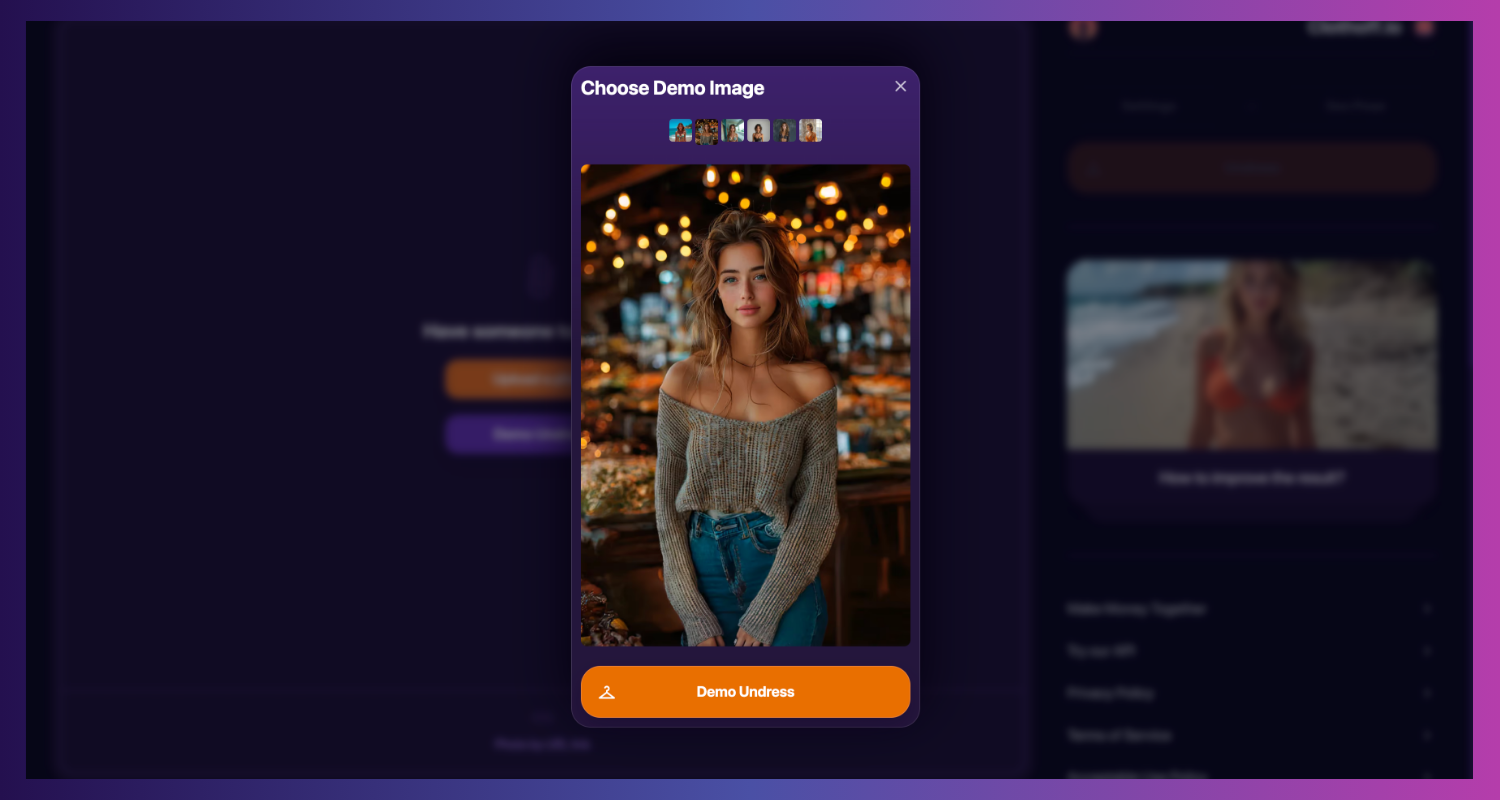Clothoff AI: Unveiling The Details & The Latest Trends
Is it possible that a technological marvel, born from the convergence of artificial intelligence and the digital age, could be subtly reshaping our perceptions of privacy and consent? The rise of "Clothoff" and similar platforms, which leverage AI to manipulate images in ways previously unimaginable, compels us to confront complex ethical questions.
This was, indeed, intriguing to read. The digital landscape, a realm once governed by the tangible limitations of physical reality, now allows for the seamless manipulation of images, blurring the lines between the real and the fabricated. Excerpts from a linked investigation by The Guardian shed light on a clandestine world where anonymity reigns supreme. In the year since the app Clothoff was launched, the architects of this digital construct have meticulously shrouded their identities, employing digital voice distortion during media interactions, and even resorting to the creation of a synthetic CEO, a phantom figure generated by the very AI technology they champion. Their creation, Clothoff, invites users to "undress anyone using AI".
Consider checking out Muah AI. Unlike some of these options, it's absolutely free plus caters an unbeatable speed in photo generation.
Beyond the technical prowess, a deeper understanding requires that we delve into the ethical quandaries such platforms raise. The potential for misuse looms large, given the capacity for creating deepfakes and non-consensual imagery. The developers, in their secretive nature, seem unwilling or unable to address these concerns directly, leaving a void that demands our attention. The creators of Clothoff, a platform that sees over 4 million monthly visits, remain cloaked in digital anonymity.
The world of "Clothoff" and its associated platforms operates with a complex interplay of technology and user behavior. Its core function, the ability to digitally "undress" images, offers a "unique experience" that transcends conventional image editing. Advanced AI algorithms process images, producing realistic results in mere seconds. The technology carefully preserves every detail, ensuring a professional output, regardless of the project.
The landscape of AI-driven image manipulation is not limited to a single player. Platforms like "AI Clothes Remover," "AI Cloth Remover aiclothesremover," and "AI Clothes Removal" offer similar capabilities. These tools, utilizing neural networks and sophisticated algorithms, promise fast, easy, and high-quality results, primarily catering to adult users.
| Feature | Details |
|---|---|
| Platform Name | Clothoff |
| Primary Function | AI-driven image manipulation; specifically, removal of clothing from images. |
| Technology Used | Advanced Artificial Intelligence, Deep Learning Algorithms, Neural Networks. |
| Key Features |
|
| Target Audience | Primarily adult users. |
| How it Works | Users upload photos, adjust settings, and receive results instantly. The AI algorithms remove clothing from the images. |
| Ethical Concerns | Potential for non-consensual image creation (deepfakes), misuse, and violation of privacy. |
| Website Traffic | Clothoff receives over 4 million monthly visits. |
| Business Model | Uses redirect sites to trick online payment services (according to the Guardian investigation). |
| Other Tools Mentioned | Muah AI, AI Clothes Remover, aiclothesremover, AI Clothes Removal |
| Reference Link | The Guardian Investigation |
The technology behind these platforms, at its core, revolves around sophisticated neural networks, a form of AI algorithm. "Clothoff.io" exemplifies this, employing a neural network to "quickly and easily remove clothes from any part of the body." The promise is simple: upload your photos, adjust the settings, and get precise results instantly. Whether you're a designer, content creator, or a curious enthusiast, these AI tools offer accuracy and privacy.
The accessibility of these technologies is undeniable. The availability of "free Clothoff AI features" further fuels their proliferation. This accessibility also underscores the urgent need for robust ethical guidelines, as this technology has the potential to fundamentally reshape how we perceive images and the people within them.
The echoes of this technology resonate beyond the initial visual impact, as the use of "redirect sites to trick online payment services," as outlined by the Guardian investigation, suggests deeper issues. This strategy points to the challenges of regulating an ecosystem built on anonymity and the potential for exploitation.
Beyond the headline feature, the platforms offer additional functionalities. The tools can serve different goals. They can be part of "design, photography, traffic arbitration." The user can remove the clothes of the person in the photo online by the help of these platforms.
In essence, Clothoff and its counterparts represent a critical juncture in the evolution of AI. This is a digital renaissance, offering both remarkable possibilities and daunting ethical complexities. We must approach this new frontier with both curiosity and a profound sense of responsibility, mindful of the potential consequences that come with wielding such powerful tools. With a clear understanding of the technology, and the potential for misuse, we can begin to navigate this evolving landscape.


